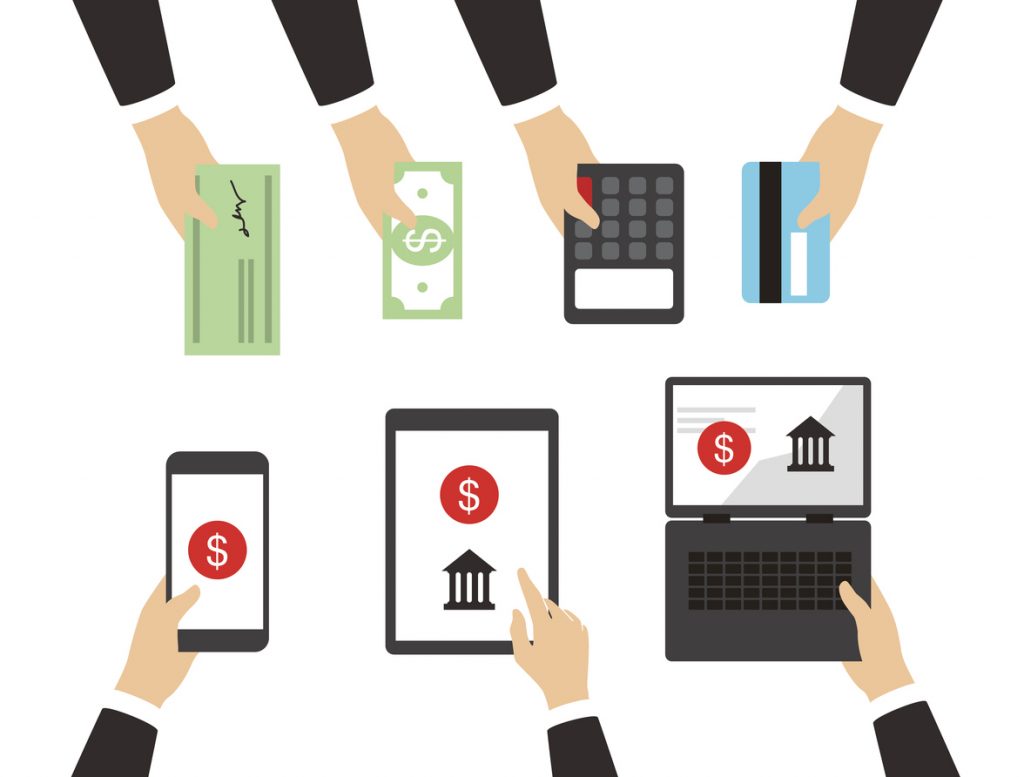
5 New Online Payment Methods for Small Businesses
Cash may soon have to abdicate its throne. There’s a revolution happening right now, as you’re reading this. Digital technology is quickly becoming the new king of customer payments. As easy as cash, but more secure, tech, digitized payment options are increasingly being adopted by small-to-medium businesses globally and we predict that they are here to stay.
With the coronavirus sweeping the world, it’s never been more important to be accepting digital payments as more and more business go online.
The digital payment processing industry
A payment processor is a company that handles all the transactions between two parties and in this case, we’re talking between a customer and a business owner.
The payment is completed by relaying all the payment information (like a credit card) from the customer’s account to the business owner’s bank account.
New digital payment methods
There are hundreds of different digital payment processing options out there and over the last decade, the online payment processing industry has grown at a rapid pace. New providers and platforms are popping up right, left and center on a near-daily basis.
Merchants need to adapt towards fast, simple and secure mobile payments, seeing as customer habits are becoming more and more mobile-geared with everything now online. Gen Z’s (born between 1996-2010) have never known life without technology, living through their mobiles screens. They are now taking spotlight over their predecessors and are set to surpass millennials as the most populous generation this year (2019) and make up 32% of the population according to Bloomberg. They expect fast and seamless payment experiences. For small business owners, it’s sink or swim…
These are the top 5 digital payment options for small businesses.
1. Mobile payments
In-store mobile payments are expected to overtake credit cards and are predicted to grow from $75 billion to $503 billion in 2020 as told by BI Intelligence.

In-store mobile payments haven’t quite taken off yet, but mobile wallets offer many benefits to both consumers and merchants. Just imagine never having to forget your wallet again – it’s all on your phone! Mobile wallets offer faster checkout and greater security features (data is encrypted and stored in the cloud not on the device itself).
With the mobile payment trend on the rise, it makes sense that mPOS’s have been developed. In fact, it’s estimated that near 28 million mPOS devices will be circulating in the US by 2021. A mPOS or mobile point-of-sale, is a tablet, smartphone, or wireless device that functions as a digital cash register. It is ideal for any retailer that wants to streamline their sales process and looking to keep up with payment trends.
You can offer a variety of mobile payment options through your mobile POS, letting customers choose their ideal payment method. You can also offer a loyalty program through your mobile POS, which is another popular payment trend that we discuss in detail later on.
As the business owner or manager, you can also get quick insights into sales and staff member performance on your mobile device and track inventory in real-time.
Benefits of a mobile point-of-sale include:
-
- Cost-effective – small business owners no longer have to invest in an electronic register or pay someone to support the software when conducting transactions
-
- Improved security – high encryption levels decrease the chance of data breaches
-
- Increased sales – process more transactions faster!
-
- Better customer experience – faster transactions and from anywhere in the world. You’ll no longer need to physically scan a credit card or issue a paper receipt
-
-
- All you need is a smartphone or tablet
- Great for travel businesses – mobile POS systems allow travel businesses to easily and inexpensively accept EMV transactions with no need to buy PIN pads, and even goes as far as offering NFC capabilities
-
Our top 3 mobile POS systems are:
- Square
- ShopKeep
- Clover
2. Electronic payments
Consumers won’t even need to whip out their credit cards if you offer electronic payment methods. If you have an online store, you can add many electronic payment methods through one-click payment buttons or in-app payments. Retailers can set up digital payment terminals for safer and more convenient payments. This is something that can also currently be seen in the business lending industry, digital lending uses technology to help businesses gain faster access to capital.
Digital wallets make it even easier for consumers as they can link multiple digital payment methods to their e-wallet, requiring just one login to access ALL of their digital payment accounts.
Travelers for example, who don’t want to travel around with cash or credit cards in their pockets, are increasingly becoming more reliant on mobile wallets for digital payments such as Apple Pay, Google Wallet, and Android Pay. If your business can accept mobile payments, you are one step ahead of the game, not only opening up your customer base today but preparing for the future.
3. Cryptocurrency
Even though just 8% of the world’s population has invested in cryptocurrency according to finder, all eyes are on digital currencies such as Bitcoin. If you start accepting cryptocurrency payments, you’ll be perceived as a market leader and innovator. Don’t get left behind on this trend as more and more businesses start to accept digital currency payments.
Blockchain enables processing to be achieved in the cloud or over a distributed system network, meaning costly data centers can be avoided entirely! Blockchain technology is expected to reduce the costs of accounting reconciliation by a whopping 70% as well as compliance costs by 30-50%.

4. Customer loyalty programs
As over 60% of millennial and Generation X consumers place importance on customer loyalty programs, more and more retailers are offering these types of rewards programs to their customers. This puts those businesses that don’t have loyalty programs at a disadvantage.
According to bond, 60% of millennials are willing to switch brands if it means getting more benefits. Based on this, we recommend investing in a store credit card or another type of loyalty card, whereby customers can get coupons, special deals and promotions, earn points and claim rewards. Doing so should help you attract new customers and retain old ones.
5. APIs
API stands for Application Programming Interface, which, in layman’s terms, is a ‘go-between’, allowing one software program to interact with another.
Why is this a payment processing industry trend?
APIs essentially bridge the gap between businesses and their financial institutions, allowing payment processing systems to seamlessly integrate with all consumer channels. It’s thanks to API technology that you can easily offer in-app and online payment processing to your customers.
API technology is dominating the fintech space too, as it gives lenders the opportunity to view transactional financial data in order to determine a borrower’s risk profile for a loan. At Become, we use API technology ourselves.
When you complete your Become application you are requested to connect your business bank account. This allows us to quickly and securely view your latest bank statements so we can match you with an optimal lender to get the best unsecured business loan possible, based on real-time data.
The future of digital payment options
Is a cashless world the way of the future? Will the physical wallet soon be no more?
Digital payments are eclipsing cash and traditional methods right now, not the future, now. Just look around, over the past decade alone, consumers have unconsciously abandoned cash and switched to digital options. From smartphones to banking, shopping to even paying for the bus (think about contactless credit cards, also known as ‘tap-and-go’ cards), we are heading toward a cashless society faster than expected.
23% of payments made in the US are now made via e-wallets and in China, that figure is 49! Although not famous yet in America, mobile payments are a global trend now on the rise. In Germany for example, 49% of all online transactions are completed via bank transfer. In Europe, open banking will enable new account to account payment schemes, essentially getting rid of the credit card in the transaction (card issuers watch out!).
As we humans evolve in this fast-paced changing world, the main idea is to make life simpler and more convenient. Online merchants offering a variety of payment methods will surely be the ones to survive.
Is your business ready for the future digital payment trends?
To ensure that your business is ready for the future of payments, make sure not to fall behind! Get your hands on one (or more) of these payment methods now to stay ahead of the game.

 Please wait...
Please wait...




